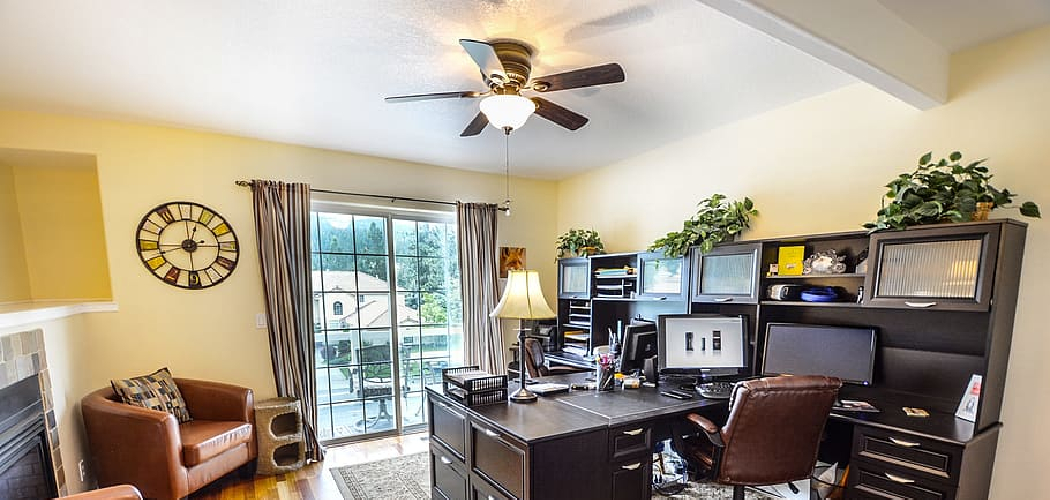Do you have a ceiling fan in your home? Ceiling fans offer many benefits, such as providing cooling relief in the summer months and circulating warm air during winter. However, if not properly installed, they can cause what is known as the strobe effect.

Strobe effect occurs when the blades fail to remain at a consistent speed, which causes them to flicker or appear to move unexpectedly. Thankfully there are ways to avoid this damaging outcome—keep reading for tips on how to avoid strobe effect with ceiling fan!
Strobe effect lighting occurs when the blades of your ceiling fan disrupt the electrical current passing through its motor- resulting in an “on” and “off” pattern that is distracting and unpleasant to look at. Fortunately, there are several ways to minimize or avoid strobe effects altogether.
In this blog post, we will take a look at some tips for how to avoid stroke effect lighting with ceiling fans as well as what causes it in the first place.
Why May You Want to Avoid Strobe Effect With Ceiling Fan?
1. To Ensure the Safety of People With Photosensitive Epilepsy
The strobe effect caused by a ceiling fan may cause a seizure or other medical episode for those with photosensitive epilepsy. This is because the bright, repetitive flashes of light created by the fan are too much for their brain to handle. To reduce or eliminate this risk, it is essential to take preventive measures and avoid the strobe effect with your ceiling fan.
2. To Improve Comfort in Your Home
The strobe effect can also be annoying and uncomfortable for people who do not have epilepsy. The flashes of light can be disorienting and even distracting, making it difficult to focus or relax in a room when the fan is running. To improve comfort in your home and make sure that the ceiling fan is not creating any unwanted strobe lights, follow the tips below.
3. To Avoid Damage to Your Ceiling Fan
In some cases, the strobe effect can also cause damage to your ceiling fan. The repetitive flashes of light can create unnecessary strain on the motor and other components of the fan, which could lead to problems with its performance over time. To avoid this kind of damage, it is important to take measures that will reduce your risk of seeing the strobe effect with your fan.
By following the tips below, you can avoid seeing any unexpected or unpleasant strobe effects with your ceiling fan and keep everyone in your home safe and comfortable.
10 Tips On How to Avoid Strobe Effect With Ceiling Fan
1. Use a Dimmer Switch
One of the best ways to prevent a strobe effect with your ceiling fan is by using a dimmer switch. This allows you to adjust the level of light and speed of the fan, which will help it run more smoothly.
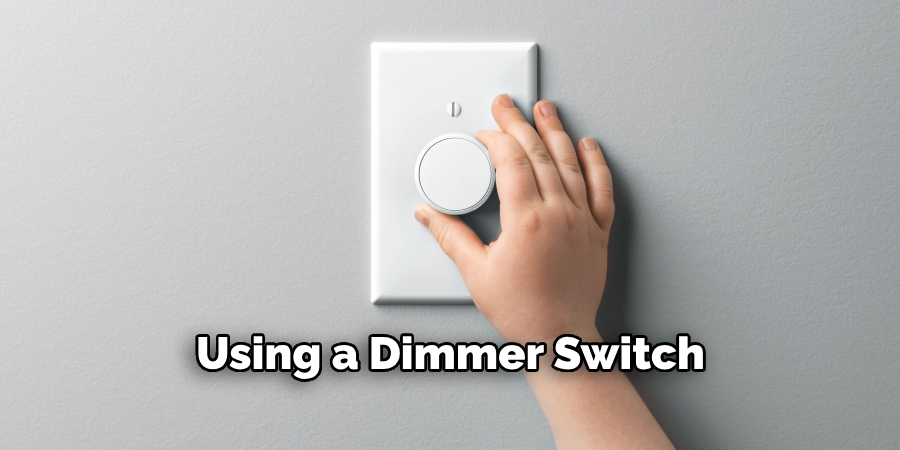
2. Change The Blades
If your fan blades are making too much noise or creating a strobe effect, then try changing out the blades for new ones. This should reduce the amount of noise and also make the fan run more smoothly.
3. Balance The Fan
Make sure that your fan is properly balanced before using it. An unbalanced fan is more likely to create a strobe light effect or cause other problems with its operation. This will also help reduce the amount of noise it creates.
4. Increase The Fan Speed
Increasing the fan speed can also help to reduce the strobe effect. By increasing the speed, you are allowing more air circulation which will help keep your room cool and prevent the light from flickering too much.
5. Change The Bulbs
If your fan is still creating a strobe effect, try changing out the bulbs. This may be due to the wattage of the lightbulb or its age. By using a higher-wattage bulb or replacing older bulbs with new ones can help reduce the amount of flickering light.
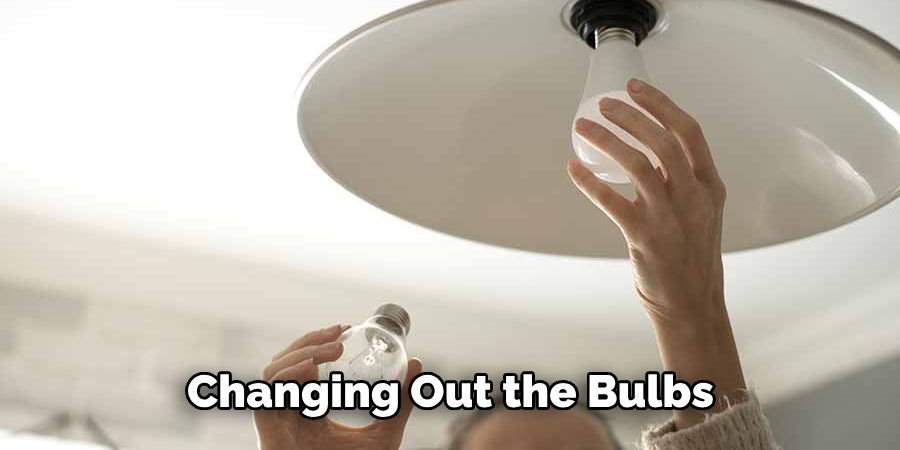
6. Change The Blades Direction
If you are experiencing a strobe effect with your ceiling fan, try reversing the direction of the blades. This can help to reduce the amount of flickering light and make your fan run more smoothly.
7. Install A Flicker-Free Lighting System
If you want to completely get rid of a strobe effect, then it is best to install a flicker-free lighting system in your home. This will help to eliminate any flickering light from your fan and make it run more smoothly.
8. Clean The Fan Regularly
You should also make sure to clean the fan blades and body regularly. This can help reduce the amount of dust that accumulates on the fan, which in turn can reduce the strobe effect it creates.
9. Check The Wiring
If your fan is still creating a strobe effect, then try checking the wiring and make sure that everything is connected properly. This can help reduce any problems with the wiring which could be causing the strobe effect.
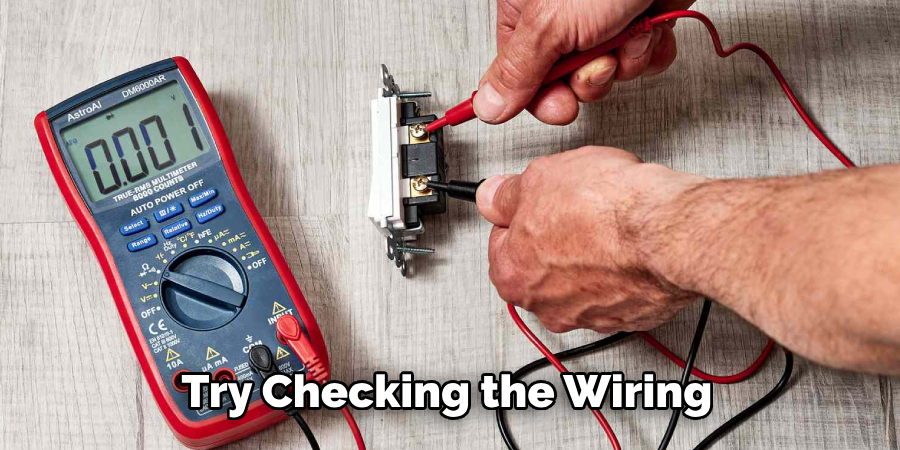
10. Adjust The Light Settings
Finally, you should also try adjusting the light settings on your fan. This can help to reduce the amount of light that is being emitted and also make sure that it is running smoothly. By following these tips, you should be able to avoid the strobe effect with your ceiling fan and keep it running smoothly.
By following these steps, you should be able to successfully avoid strobe effect with your ceiling fan and keep it operating in a safe and efficient manner. Be sure to regularly check the wiring, blades direction, and light settings of your fan for optimal performance. Doing so can help you get many years of use out of your ceiling fan without any issues.
Frequently Asked Questions
What Precautions Can I Take to Avoid Strobe Effect With My Ceiling Fan?
The strobe effect can be avoided by using a different type of lighting fixture or installing an inverter in the fan. If you are purchasing a new fan, look for models that come with built-in inverters designed to minimize the strobe effect. You should also make sure that the fan you select has blades with a maximum pitch of 12 degrees, as this will reduce potential strobe effects.
Additionally, check to ensure that the fan’s motor is UL approved and uses high-quality ball bearings, which can help maximize the life of your ceiling fan and prevent it from making any potentially annoying noises. Lastly, avoid placing ceiling fans too close to walls or furniture, as this can create a strobe effect.
What Are the Benefits of Using an Inverter With My Ceiling Fan?
Using an inverter with your ceiling fan helps reduce the possibility of strobe effects and eliminates any potential flickering associated with the fan’s lighting system. Additionally, inverters are designed to conserve energy and can help reduce your overall electricity costs.
Moreover, they ensure that the fan runs quietly and smoothly, increasing its efficiency and longevity. Finally, depending on the model of the inverter you select, it may be able to extend the fan’s life span by up to 50%.
What Other Options Are Available If I Don’t Want to Use an Inverter With My Ceiling Fan?
Instead of using an inverter, you can also choose a different type of lighting fixture. LED lights are becoming increasingly popular and their unique design makes them suitable for ceiling fans, as they eliminate the need for inverters by providing a direct current instead of alternating current.

LED lights also consume significantly less power than most other types of lighting fixtures, making them a cost-effective option. Additionally, they are available in a variety of styles and colors, so you can find the perfect fit for your ceiling fan.
How Much Will it Cost to Install an Inverter or Replace My Lighting Fixture?
The cost of installing an inverter will depend on the type of fan you have and the inverter model you select. Generally, they range from around $50-$100. Replacing your lighting fixture can also be pricey, depending on the complexity and size of the job. However, the long-term savings from reduced energy consumption usually make them a worthwhile investment.
Can I Install an Inverter or Replace a Lighting Fixture Myself?
In most cases, it is best to consult a professional in order to install an inverter or replace a lighting fixture. An electrician can ensure that the job is done correctly and safely. For smaller jobs, such as replacing light bulbs and switches, you may be able to do the job yourself. However, if you are uncertain about your abilities it is always best to seek professional help.
How Many Ceiling Fans Should I Have in a Room?
The number of ceiling fans you should have in one room depends on the size and layout of the space. Generally, it is best to limit the number of fans to two or three per room, as having too many can be visually overwhelming and create an unnecessary strobe effect.
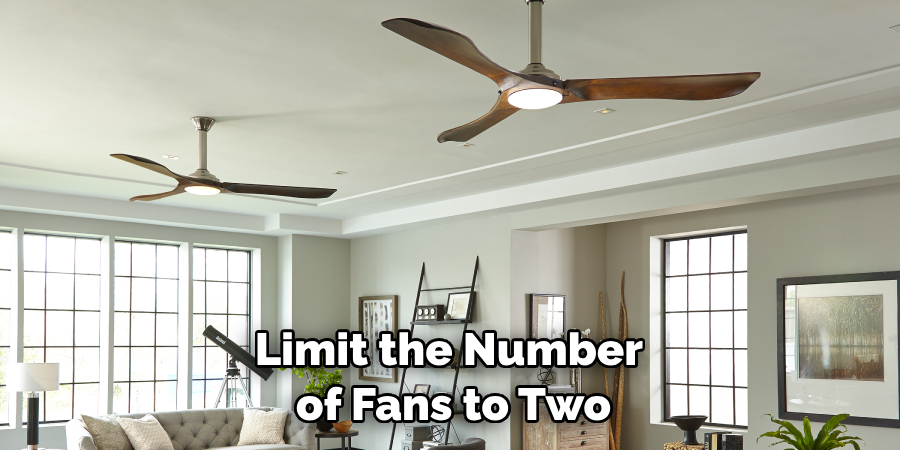
Additionally, make sure that the fans are spaced evenly apart and positioned away from walls. This will help ensure optimal air circulation throughout the room.
By following these precautions, you can rest assured that you won’t experience any strobe effects with your ceiling fan. Additionally, using an inverter or choosing the right type of lighting fixture can also help extend its lifespan and reduce energy consumption. Ultimately, no matter which lighting option you choose, you can be sure that your ceiling fan will provide a safe and enjoyable experience.
Conclusion
In conclusion, if you want to avoid the strobe effect with your ceiling fan, it’s important to choose the right bulbs. By using either low-watt fluorescent or LED bulbs, you can reduce your monthly energy bill and ensure your fan looks good in your home. Similarly, eliminating shadows by positioning the fan properly can make a big difference in your overall experience.
It’s also worth noting that periodically inspecting any flickering lights for issues is key to making sure everything continues running smoothly. Whether you’re looking for a bright and modern look or an old school charm, following these tips will help you manage the strobe effect when installing or revamping your ceiling fan.
With these tips on how to avoid strobe effect with ceiling fan in mind and a bit of care, you can have a beautiful overhead fixture for years to come!
